'AZ Plant Lady' writes book on desert gardening with more than cactus and rocks
Noelle Johnson moved from coastal California to the desert in 1986, and everything she planted in her new garden died. She wasn't used to the extremes of Arizona's hot and dry climate and neither were the plants she was trying to grow.
Her search for answers turned up little guidance on how to nurture green life in an arid climate. The books she consulted at the Phoenix library, even those with sections for different climates, completely skipped over the unique challenges of the Sonoran Desert, with its two separate rainy seasons and blistering hot summers.
Now she's written the book she wished she'd had. Publishing Tuesday, "Dry Climate Gardening" is filled with color photos, straightforward plant profiles and easy watering guides. It aims to help Arizonans design and maintain thriving desert gardens that can be "much more than just cactus and rocks," she says.
The proof that it's the text desert-specific gardeners have been waiting for is on Page 71, where Johnson recommends, from extensive personal experience, how best to remove cactus spines from skin. (Hint: it involves a combination of tweezers, white glue and duct tape or gauze.)
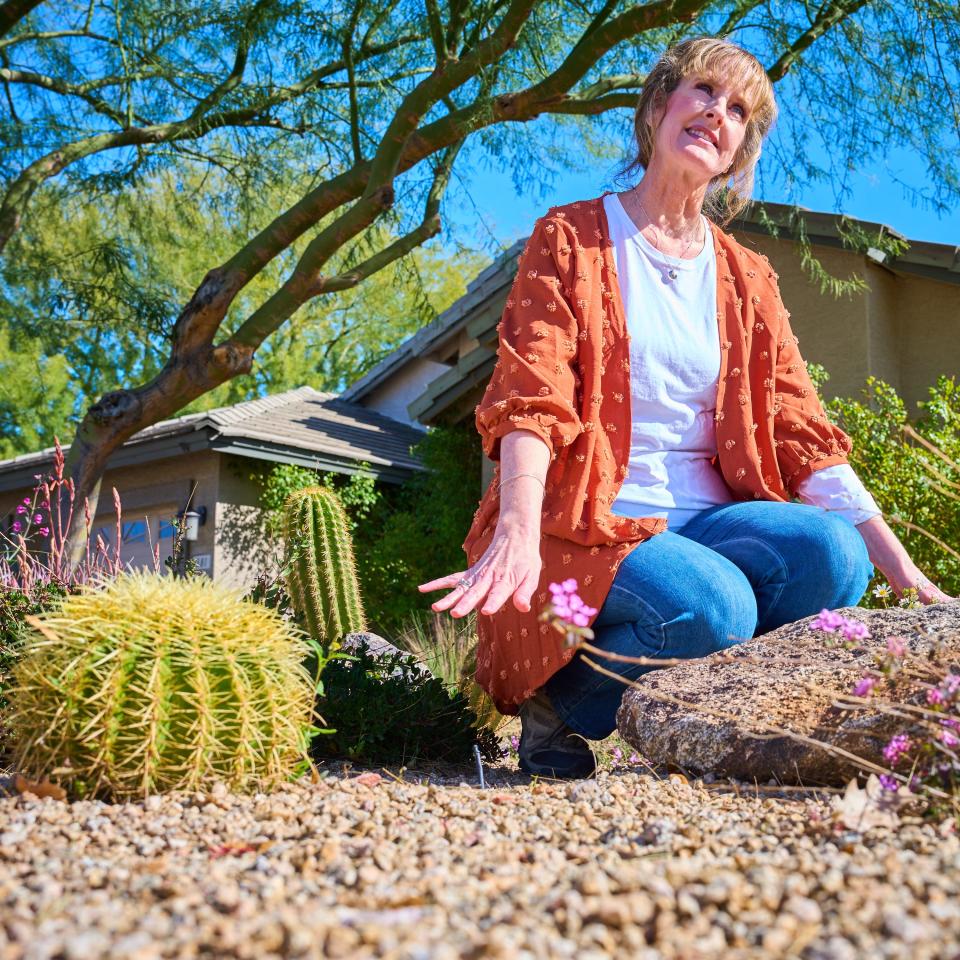
Johnson didn't initially set out to write a book. She just wanted to keep her own plants alive and, once she finished her degree in plant biology and horticulture at Arizona State University and started advising others, to help her clients create the types of outdoor spaces they desired. Because metro Phoenix is one of the fastest-growing areas in the country, demand was high for her consultations with newcomers eager to put down roots in rocky ground.
When the 2008 recession hit and business temporarily dried up, she started writing in a blog to pass on her hard-won knowledge from the thorny trenches. In it, she called herself "AZ Plant Lady," and the name stuck.
"At that time you had to come up with a catchy name rather than being known by your own name, and 'AZ Plant Lady' just described what I was," Johnson told The Republic from her yard in Chandler. "People outside of Arizona sometimes think, 'Well, it just means A to Z plant lady. She knows all of it.' So now some people call me 'AZ Plant Lady.' Some people call me 'Arizona Plant Lady.' I answer to both."
Climate series:The latest from Joan Meiners at azcentral, a column on climate change that publishes weekly
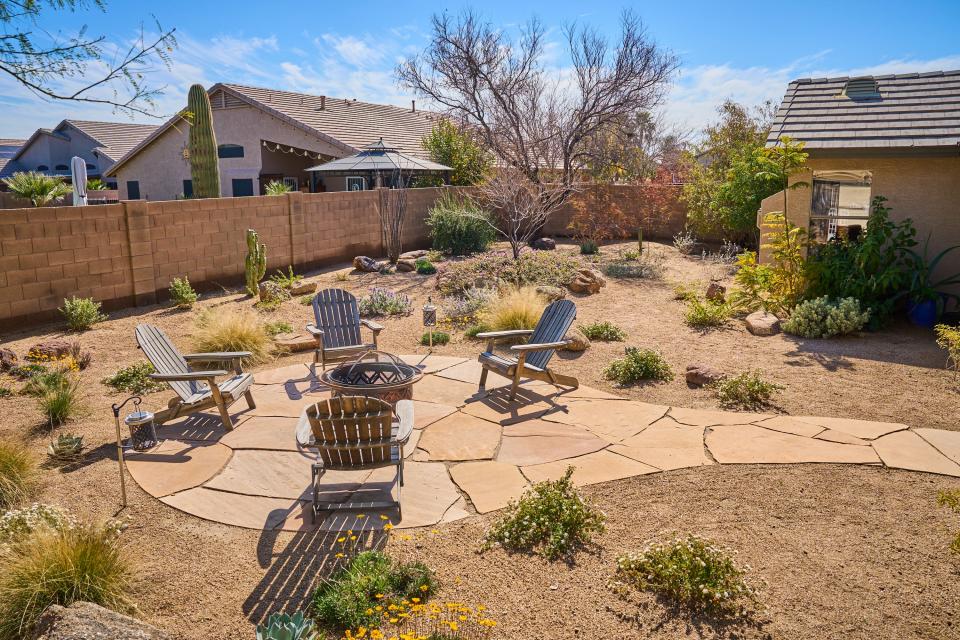
After that, requests started popping up from magazines and big box stores like Home Depot for articles to help demystify the art and science of desert gardening. When publishers first reached out about her interest in writing a book, she wasn't ready. She was too busy trying to answer the call for her online class, Desert Gardening 101.
It wasn't until the pandemic and the 2020 "summer of death," as she calls it, that she could finally see herself writing a book. During the relentless heat waves that pulsed across Arizona's desert that year, marking July 2020 as the hottest month ever in Phoenix, followed by an even hotter August, then the summer as a whole becoming the warmest in recorded history, she honed her eye for attributes of desert plant success.
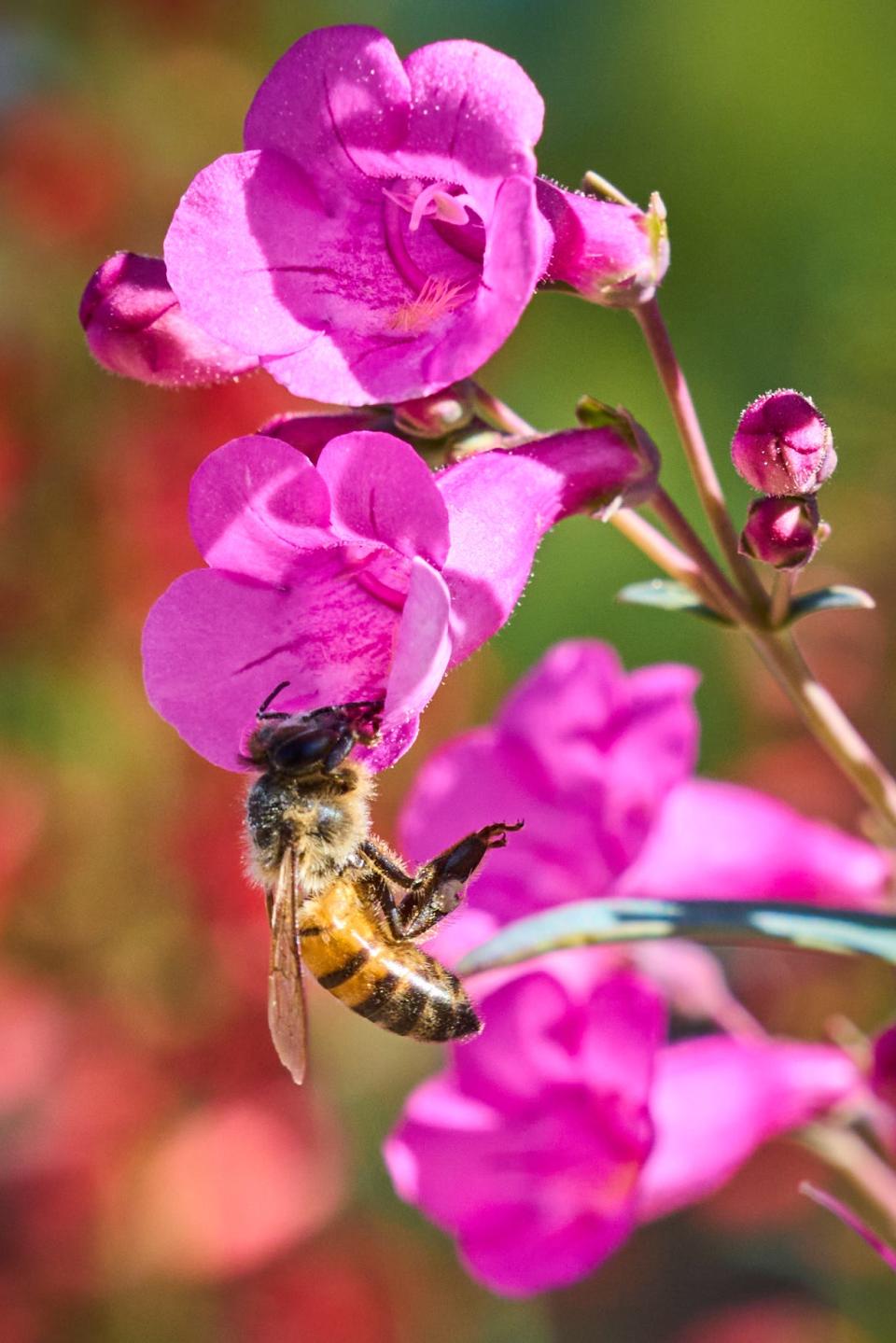
She started driving around during heat waves making lists of plants that seemed to be struggling and those that thrived under unprecedented hot and dry conditions.
"I was very dismayed in my own garden at some plants that were struggling, even some of my cactus," Johnson said. "But I would see plants that were doing just fine, that had no problem."
Growing fuel:Grass for gas? Researchers, businesses weigh options for sustainable aviation fuel
Standing in her front yard, Johnson runs her bare hands up and down a spineless 8-foot totem pole cactus, which she describes in her book as a lumpy mutant that looks like a drippy candle. It thrives during hot days in well-drained soils with monthly watering in the summer, she says.
She points out a feathery cassia full of yellow blooms that she planted against her rock wall to shield more delicate plants from its radiative heat, then walks past a bright pink Parry's penstemon busy with bees to another long and lean cactus called a Mexican fence post. Its backside shows the scars from where she shared cuttings with neighbors, the successful evidence of which can be seen standing tall in the front yard of a house across the street.
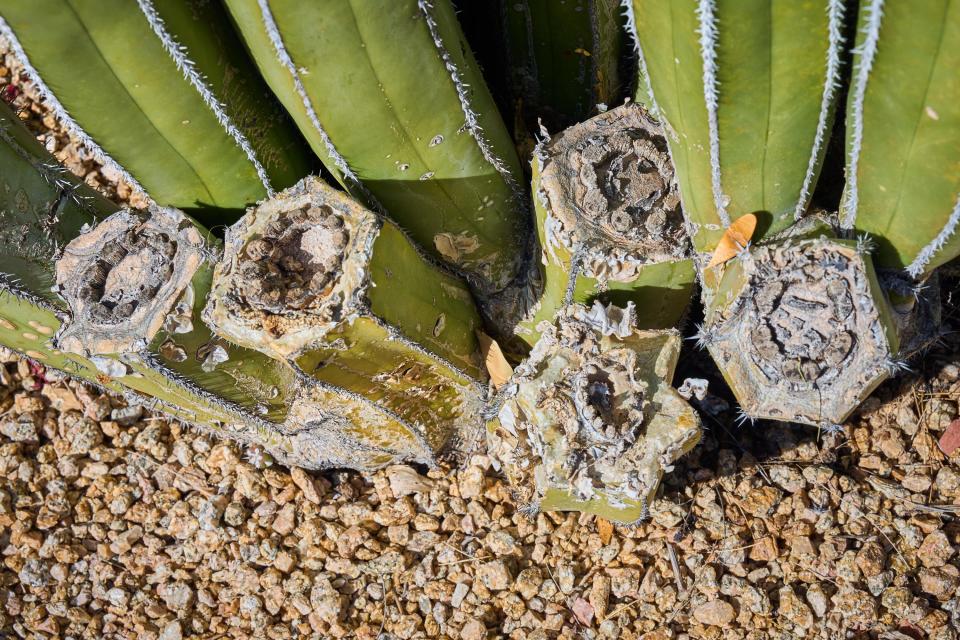
In her backyard, she points out an octopus agave with curved, "Medusa-like" arms that flourish in the cooler microclimate of a partially shaded spot near her back porch. This species flowers quicker than some other "century plants," her book says, but requires supplemental water every three weeks from spring through fall.
Having clear guidelines on which plants do well in extreme heat and drought and which need some extra help to make it through the summer will become increasingly important as climate change continues to push the natural boundaries of plant tolerance and the Colorado River crisis continues to jeopardize water supplies in some areas of the state, Johnson said. Being desert-aware can have benefits that reach far beyond garden gates.
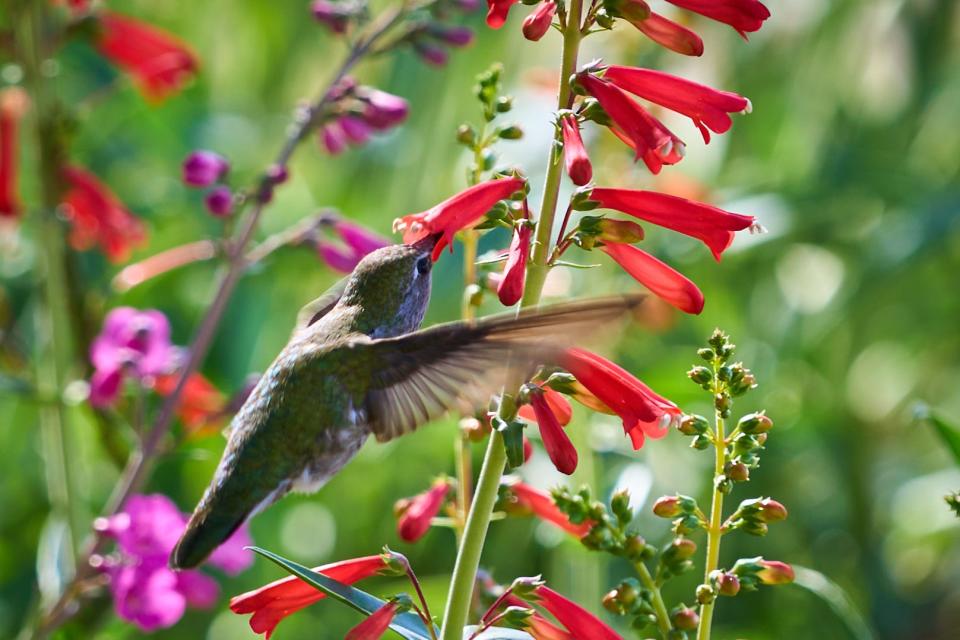
"Climate change is not going away. We are getting warmer. And we need to make sure that we have resilient desert gardens using native or desert-adapted plants that look great without a lot of fuss," Johnson said. "Increasing temperatures are a big deal, but we can affect that just in our own spaces by adding new plants of the right kinds that will help decrease the urban heat island effect."
Most of her clients, about 90%, water too often, she said. Many hail from wetter climates and don't adjust their ideas about gardening when they move. Or they have nonfunctional turf, grass that doesn't get used for recreation, that requires more water than is reasonable in an arid environment experiencing a record-setting drought.
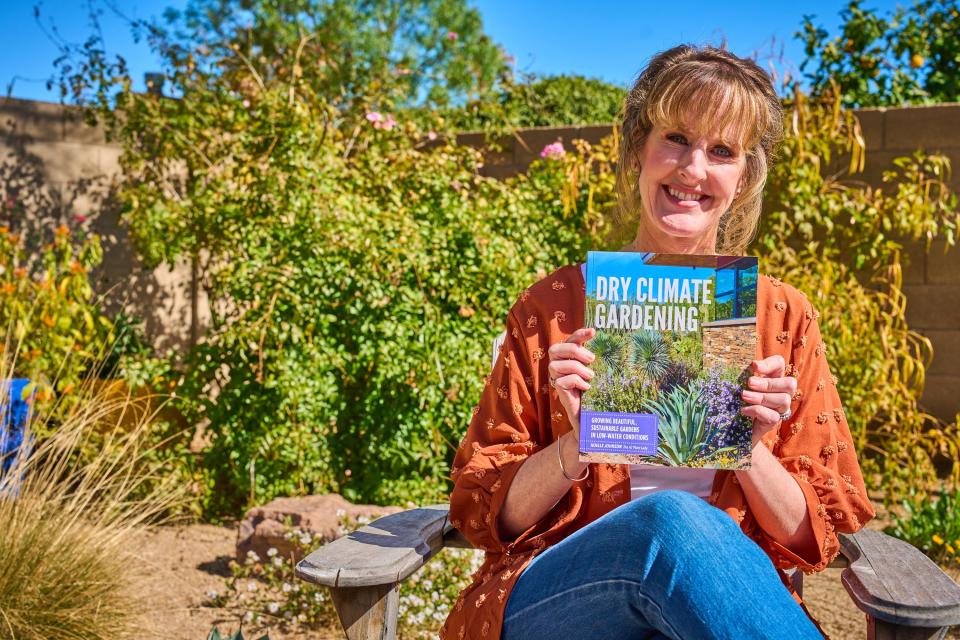
Gardening in the desert is all about trial and error and taking credit for the happy accidents, Johnson says. She sometimes allows plants to sprout unplanned from seed and enjoys that they self-selected that spot to thrive. In other cases, she tells clients that it might take several tries to get a transplanted ocotillo, for example, to take root.
She leans in to smell the blooms on a large, arching pink beauty plant in her side yard, a desert-adapted native of Australia she planted there 23 years ago that normally grows as a shrub. This one started to grow up the wall into more of a tree form, so she pruned it at the bottom to help it along.
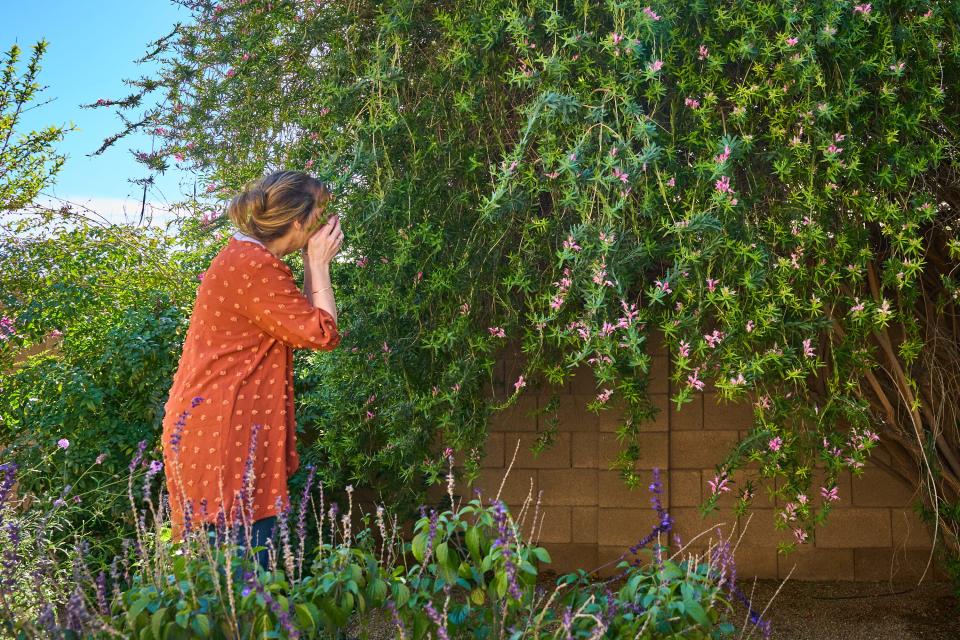
It now casts welcome shade against her kitchen window and is home to a chorus of desert birds.
Joan Meiners is the climate news and storytelling reporter at The Arizona Republic and azcentral. Before becoming a journalist, she completed a doctorate in ecology. Follow Joan on Twitter at @beecycles or email her at joan.meiners@arizonarepublic.com.
Support climate coverage and local journalism by subscribing to azcentral.com at this link.
This article originally appeared on Arizona Republic: AZ Plant Lady writes a new book on gardening in the desert

